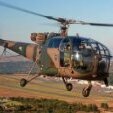Just to clarify on supercharger, yes they can increase boost or manifold pressure. That’s why a 7 litre V8 will put out 1000Hp+ down a drag strip. Also typical Merlin 60/70 series max boost was around 60” MAP, but at Reno air races, will crank them up to around 103” if not higher. Poor old war horse engines, it’s a tough retirement! Makes me wince! I think typical supercharger function in aircraft is to allow for maintaining manifold pressures up to higher altitudes. For example, with a P&W AN1430 radial, the fixed gear supercharger, would not allow you to go to full throttle at sea level, you would be way over boosting the engine. As you climbed, you advanced the throttle to maintain 30” MAP, until you reached full throttle height, than because it was a single speed supercharger, above full throttle height, MAP will reduce. A two speed supercharger would gear up, to maintain MAP to a greater height. So not so much boost increase, but maintaining engine max power at higher altitudes. Turbo chargers do the same thing, but because they are not driven by the engine directly but by exhaust gasses, they have a waste gate to prevent overboost.


